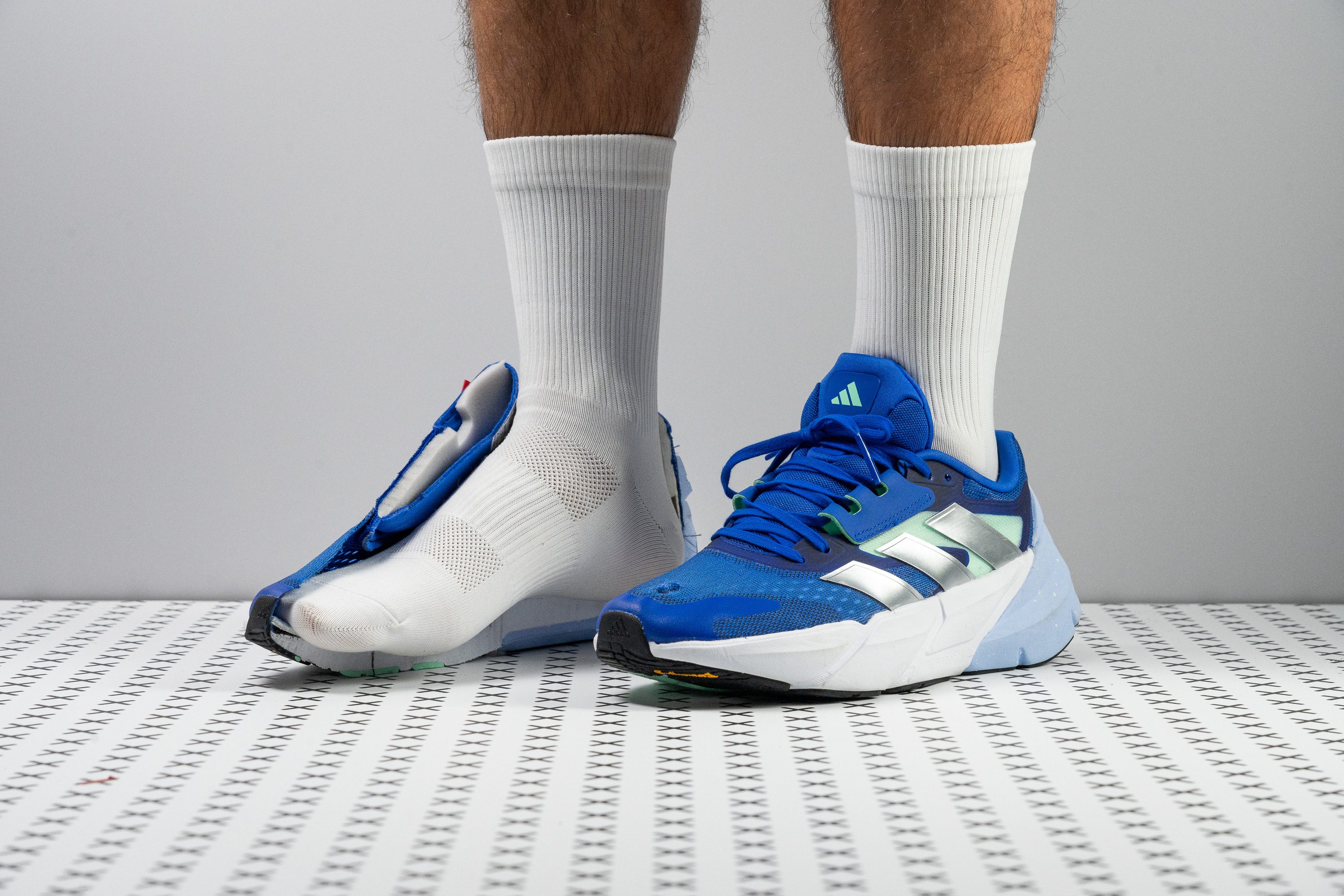Our verdict
- Top pick in best running shoes for plantar fasciitis (2023)
- Top pick in best Adidas running shoes (2023)
Pros
- Cushioned for long miles
- Supportive for a neutral shoe
- Wide platform
- Secure foothold
- Well-padded interiors
- Highly breathable
- Great for casual wear
- Value for money
- True to size
Cons
- Heavier than average
- Firm heel landings
Audience verdict
Comparison
The most similar running shoes compared
+ + Add a shoe | |||||
|---|---|---|---|---|---|
| Audience score | 83 Good! | 92 Superb! | 81 Good! | 89 Great! | |
| Price | $130 | $125 | $90 | $130 | |
| Pace | Daily running | Daily running | Daily running | Daily running | |
| Shock absorption | - | High | Low | High | |
| Energy return | - | Moderate | Low | Low | |
| Traction | - | Moderate | Moderate | Moderate | |
| Arch support | Neutral | Neutral | Neutral | Neutral | |
| Weight lab Weight brand | 11.6 oz / 328g 11.6 oz / 328g | 10.1 oz / 285g 9.7 oz / 275g | 10.5 oz / 298g 10.8 oz / 305g | 9.7 oz / 274g 9.5 oz / 270g | |
| Drop lab Drop brand | 8.0 mm 6.0 mm | 6.5 mm 6.0 mm | 8.6 mm 10.0 mm | 10.5 mm 5.0 mm | |
| Strike pattern | HeelMid/forefoot | Mid/forefoot | HeelMid/forefoot | Heel | |
| Size | Half size small | True to size | True to size | True to size | |
| Midsole softness | Balanced | Soft | Balanced | Soft | |
| Difference in midsole softness in cold | Normal | Normal | Big | Normal | |
| Toebox durability | Bad | Decent | Decent | Bad | |
| Heel padding durability | - | Bad | Decent | Decent | |
| Outsole durability | - | Good | Decent | Good | |
| Breathability | Breathable | Moderate | Moderate | Breathable | |
| Width / fit | Narrow | Narrow | Medium | Medium | |
| Toebox width | Wide | Medium | Narrow | Medium | |
| Stiffness | Stiff | Moderate | Moderate | Moderate | |
| Torsional rigidity | Stiff | Stiff | Stiff | Stiff | |
| Heel counter stiffness | Stiff | Moderate | Stiff | Stiff | |
| Rocker | ✓ | ✓ | ✗ | ✗ | |
| Heel lab Heel brand | 33.8 mm 33.0 mm | 34.1 mm 38.0 mm | 33.0 mm 34.0 mm | 40.7 mm 40.0 mm | |
| Forefoot lab Forefoot brand | 25.8 mm 27.0 mm | 27.6 mm 32.0 mm | 24.4 mm 24.0 mm | 30.2 mm 35.0 mm | |
| Widths available | Normal | Normal | Normal | NormalWide | |
| Orthotic friendly | ✓ | ✓ | ✓ | ✓ | |
| Season | SummerAll seasons | All seasons | All seasons | SummerAll seasons | |
| Removable insole | ✓ | ✓ | ✓ | ✓ | |
| Ranking | #524 Bottom 21% | #8 Top 3% | #308 Bottom 18% | #113 Top 30% | |
| Popularity | #666 Bottom 1% | #275 Bottom 27% | #102 Top 27% | #245 Bottom 35% |
Who should buy
We recommend this workhorse from Adidas to runners in search of the following:
- a max-cushioned shoe for long and easy miles
- a neutral shoe with a touch of support (semi-stability shoe)
- a design that's stylish and comfortable enough for casual wear
- a daily trainer that doesn't break the bank (Adistar 2.0 costs $15 less than similar shoes)
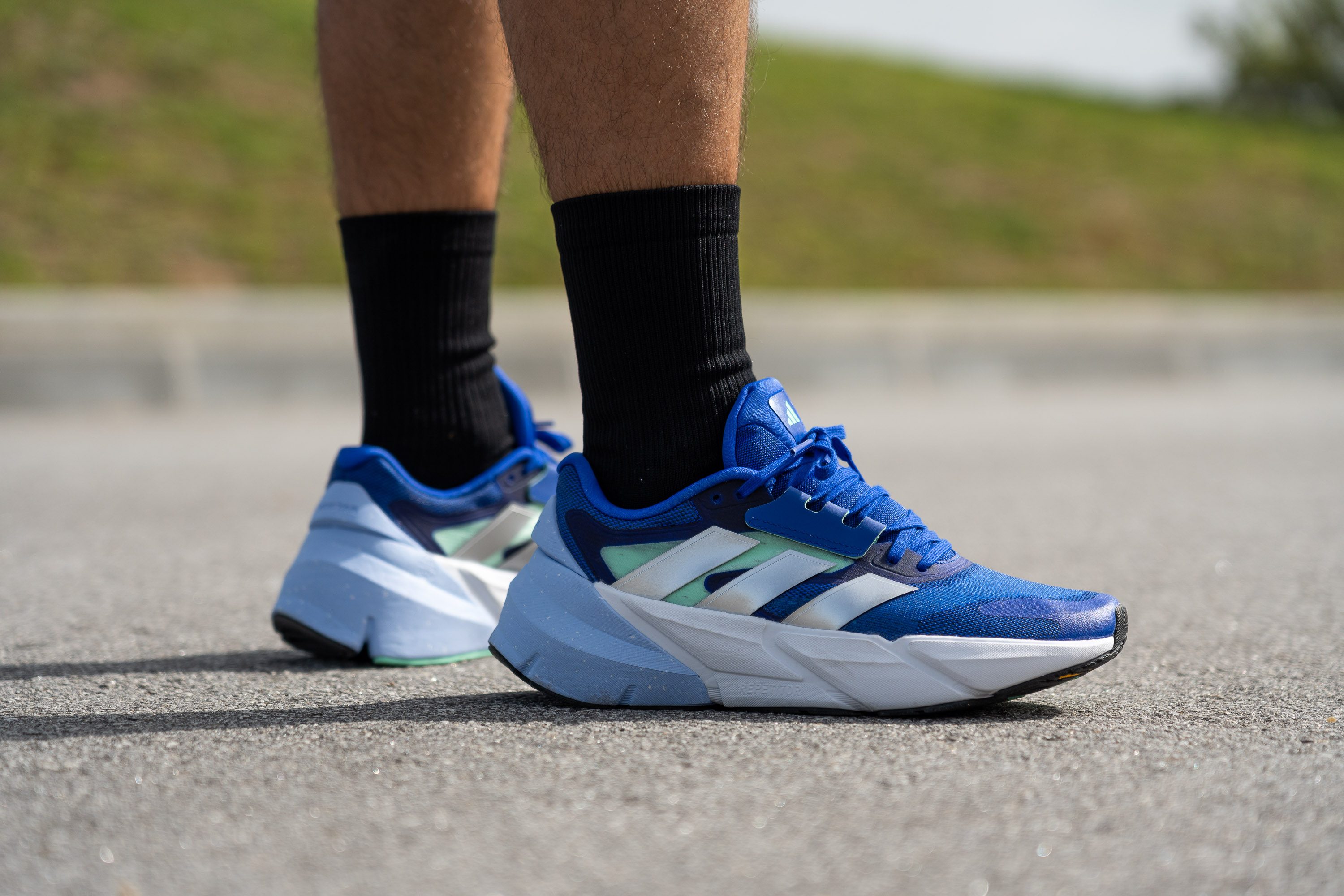
Who should NOT buy
The Adidas Adistar 2.0 is VERY heavy (11.6 oz/328g), even for its max-cushioned kind! You can easily find shoes with the same heel stack that weigh nearly 100g less.
For example, Adidas Adizero SL (speed-oriented, 8.6 oz/244g) or PUMA Velocity Nitro 2 (9.1 oz/257g).
Also, if you're a heel striker, you may prefer a plusher foam under the heel. Try the Adidas Ultraboost Light instead.

Cushioning
Heel stack
According to Adidas, the heel stack on the Adistar 2.0 is 33 mm. This is very close to what our caliper measurement shows - 33.8 mm.
You definitely want this amount of cushioning (30 mm+) for long weekend runs of 10K and more.
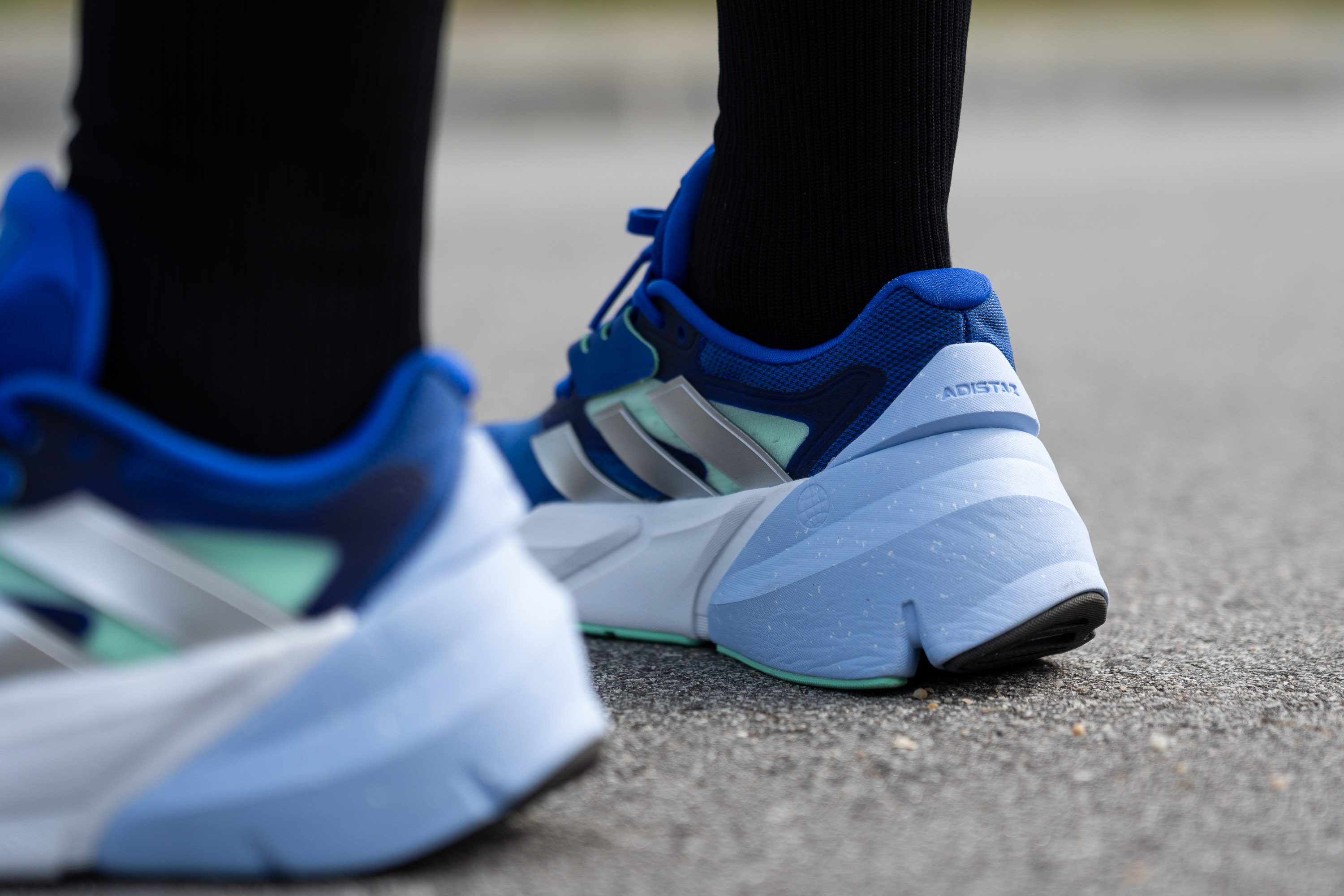
We know, in the photo the Adistar looks MUCH taller than that. But the trick is: we could actually feel our feet sitting inside the foam rather than on top of it.
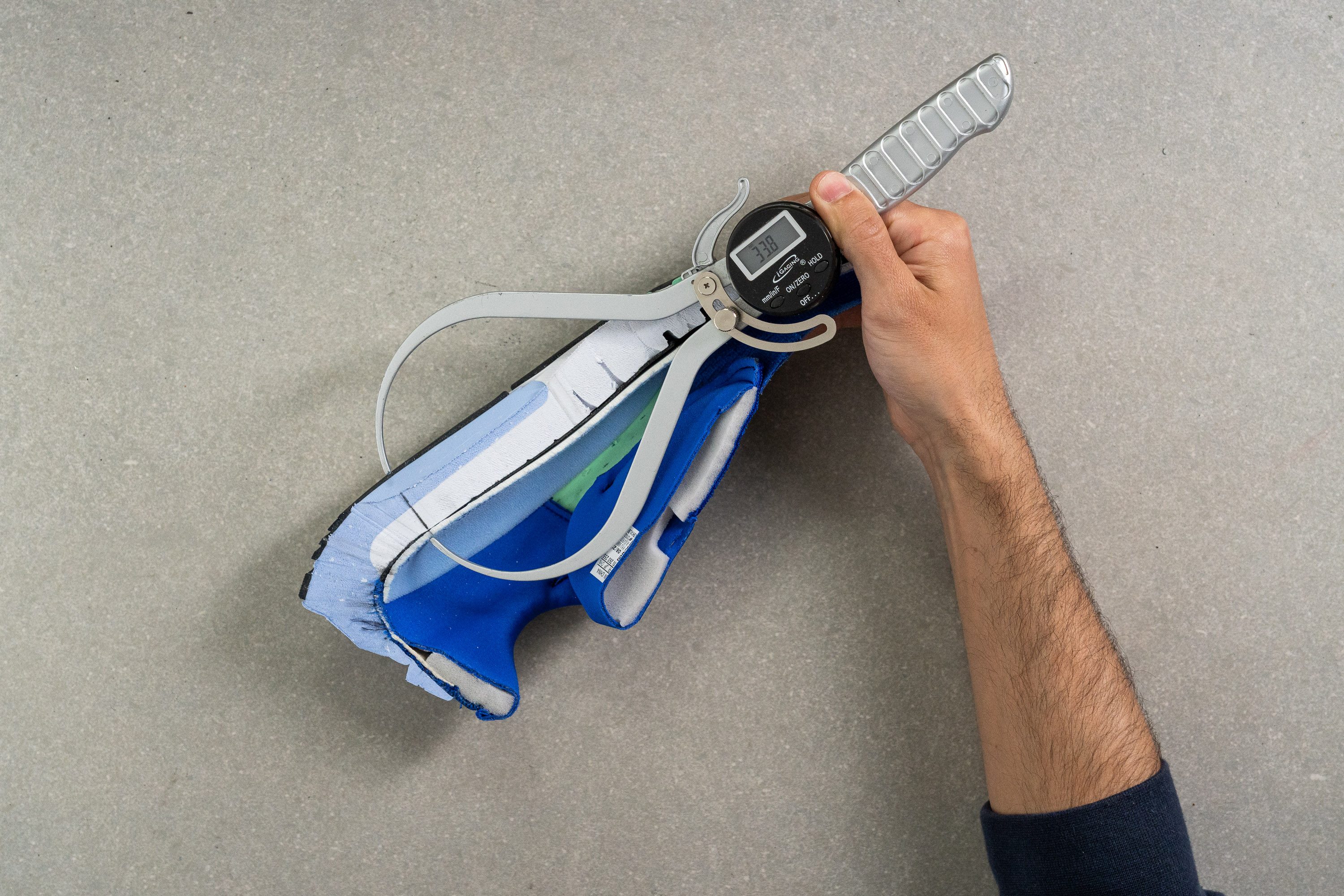
| Adistar 2.0 | 33.8 mm |
| Average | 34.8 mm |
Forefoot stack
Measuring the forefoot, we found it a bit thinner than stated by the brand - 25.8 mm as opposed to the official 27 mm.
Sure, it doesn't make the shoe feel less cushioned but it does affect the heel-to-toe drop (discussed below).
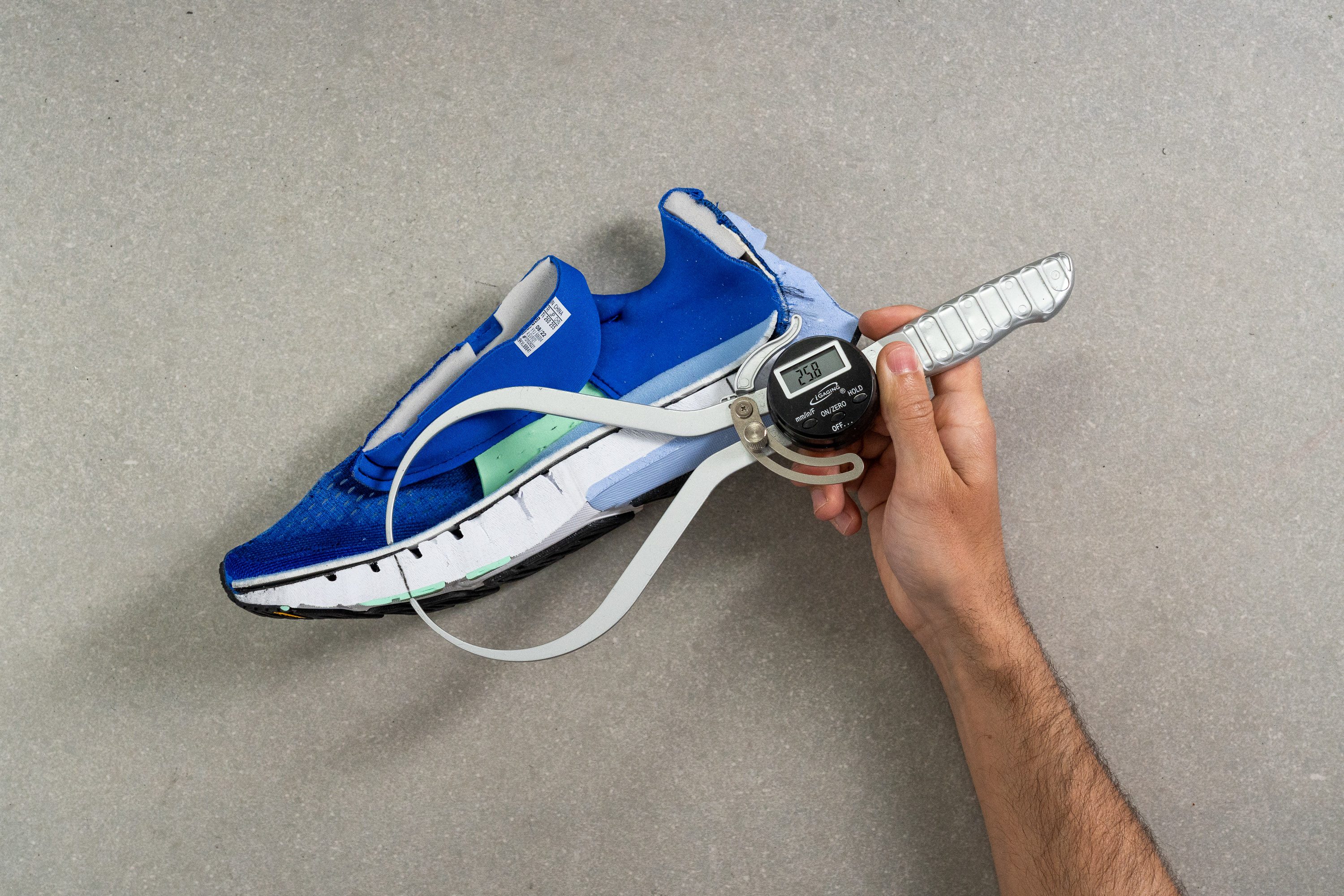
| Adistar 2.0 | 25.8 mm |
| Average | 26.2 mm |
Drop
Contrary to the brand's statement, the shoe's drop is not 6 mm. Based on our caliper measurements, the heel drop is exactly 8 mm.
However, we believe that only very experienced runners sensitive to the drop could actually notice this nuance.
A typical offset for a daily trainer is 8.5 mm, so 8 mm feels right at home for most runners

| Adistar 2.0 | 8.0 mm |
| Average | 8.6 mm |
Midsole softness
Dual-density foam? In a neutral shoe? Looks like Adidas just came up with a semi-stability shoe.
Just like the first Adistar, the 2.0 employs the REPETITOR+ foam which has a firmer component in the heel and a softer one in the rest of the midsole.
The primary (white) foam is somewhat soft (not plushy soft). Pressing a durometer against it, we discovered that at 22.4 HA, it is about 10% softer than road running shoes on average.
It makes for a rather comfy ride and smooth heel-to-toe transitions.
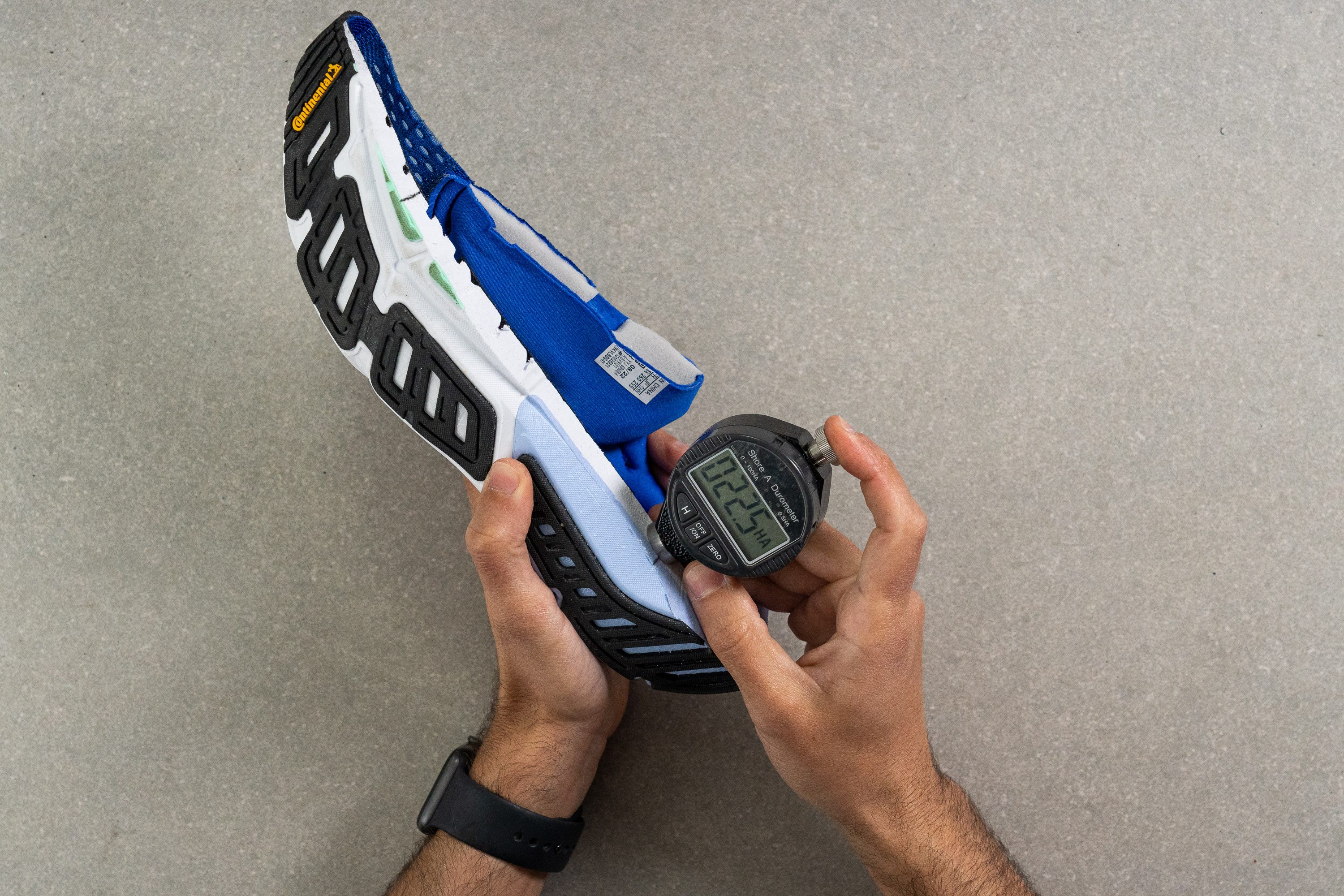
| Adistar 2.0 | 22.4 HA |
| Average | 20.4 HA |
Secondary foam softness
In the heel, the firmer (blue) foam cradles the soft (white) foam. Based on our durometer measurement of 31.6 HA, it is 41% firmer than the white foam.
From our experience running in the Adistar 2.0, landings feel SO stable. Almost as if we were running in a stability shoe!
But to our great disappointment, these same landings feel pretty hard, especially when heel striking. So, if you are after a plush ride, go for the New Balance FF More v4 or the Brooks Glycerin 20 (maybe even the Glycerin 20 GTS if you crave support).

| Adistar 2.0 | 31.6 HA |
| Average | 22.8 HA |
Size and fit
Size
Adidas Adistar 2.0 fits half size small (16 votes).
Consider sizing up
Width / Fit
The Adistar 2.0 comes with a medium-width toebox. We believe that it will accommodate most foot shapes, except really wide feet.
Based on our measurement of the widest toebox part (98.3 mm), it is just average for a running shoe.
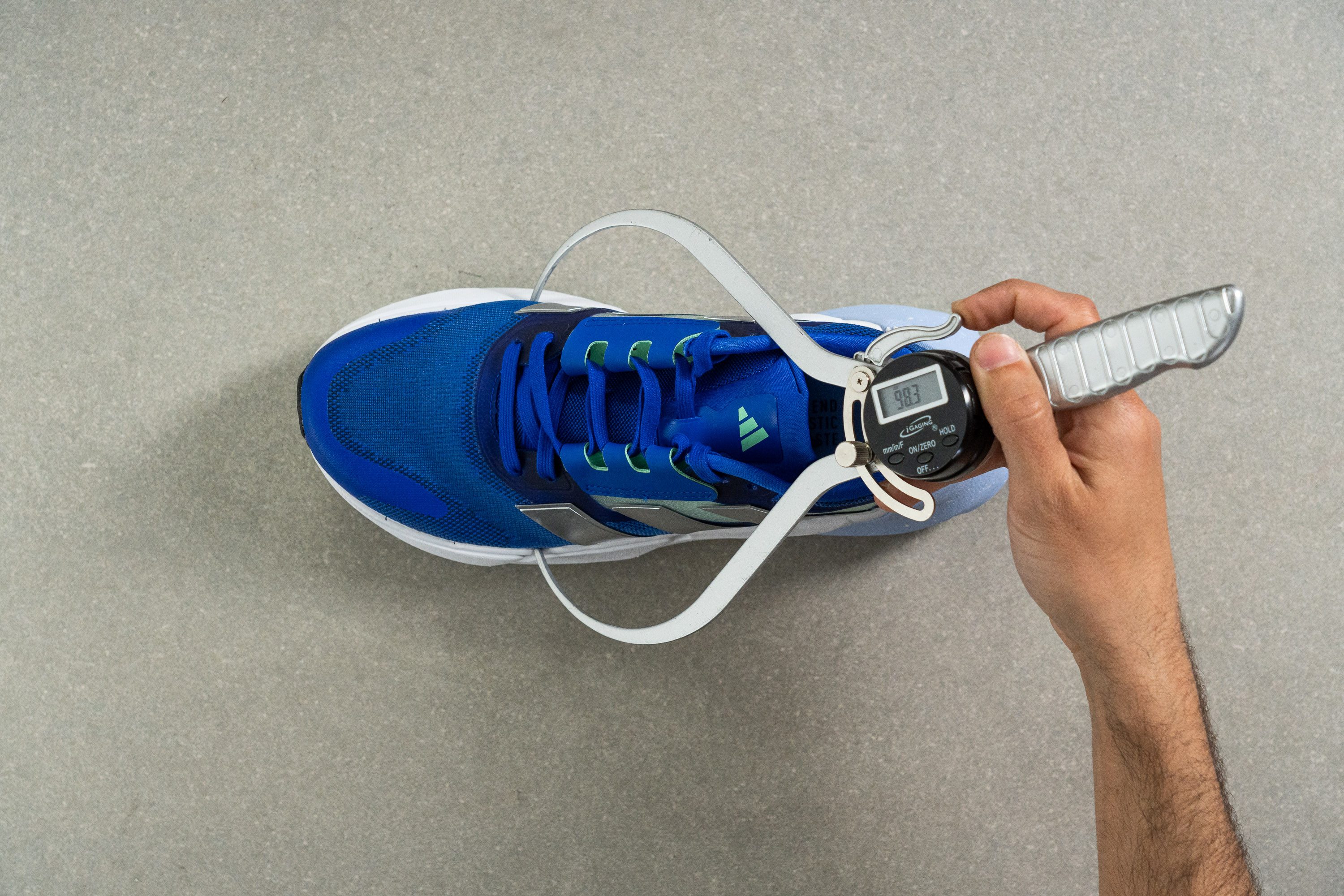
This test follows an older methodology, which is why you don't see recently tested shoes in the chart. Results from different methodologies can not be compared.
| Adistar 2.0 | 98.3 mm |
| Average | 98.5 mm |
Toebox width
However, it gets more interesting around the big toe. We found that the shoe is 79.9 mm wide in this part of the toebox, which is noticeably wider than the average.
As a result, the shoe's toebox is less pointy and feels very accommodating to our feet.
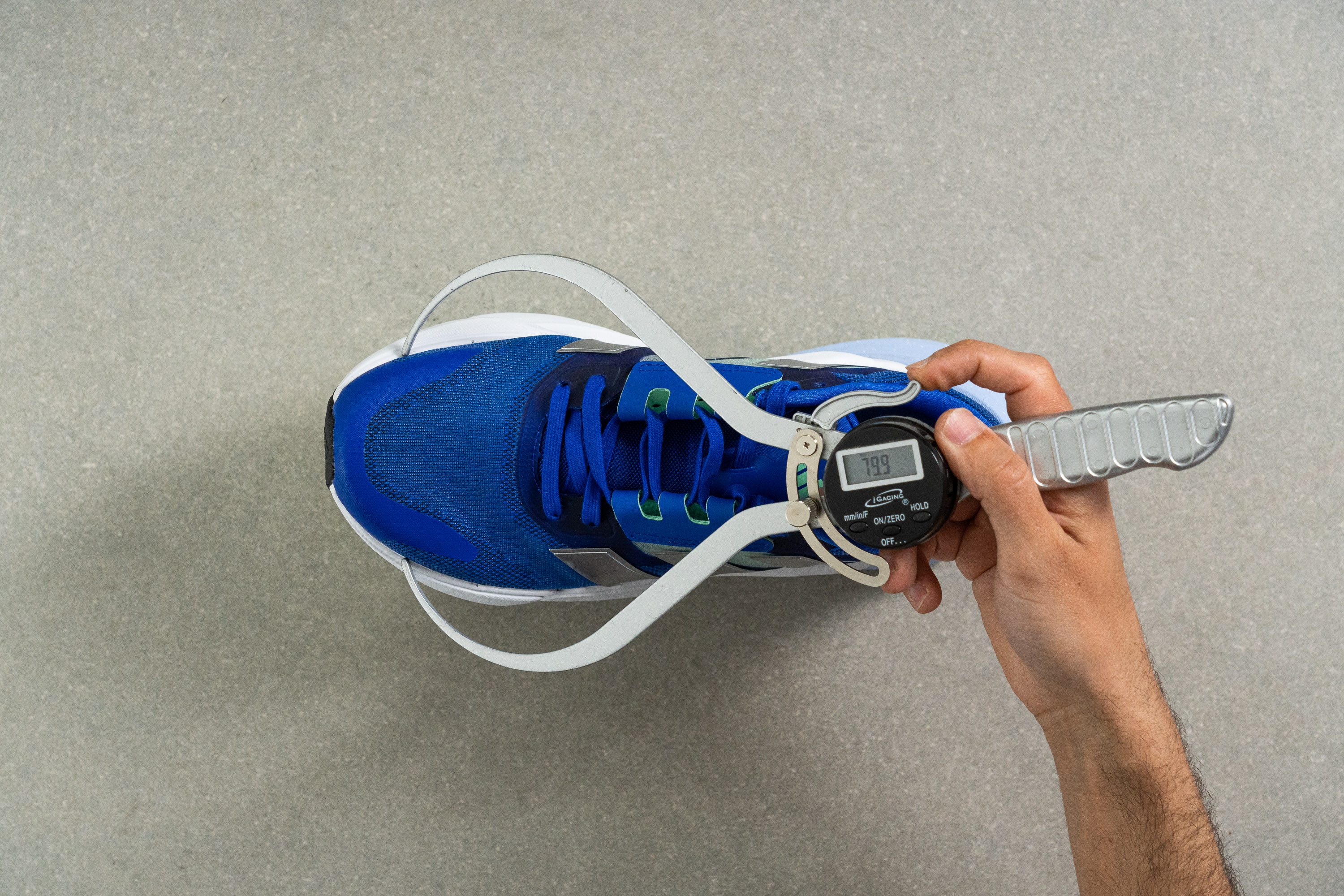
This test follows an older methodology, which is why you don't see recently tested shoes in the chart. Results from different methodologies can not be compared.
| Adistar 2.0 | 79.9 mm |
| Average | 78.4 mm |
Flexibility / Stiffness
For such a mighty sole, we were surprised to see the Adistar 2.0 bend so easily compared to the average.
It only required a force of 23.4N to bend the shoe to a 90-degree angle. Less than it takes on average.
This test follows an older methodology, which is why you don't see recently tested shoes in the chart. Results from different methodologies can not be compared.
| Adistar 2.0 | 23.4N |
| Average | 28.1N |
Stiffness in cold (%)
Just keep in mind that the shoe will get stiffer in cold weather.
The force gauge measurement went from 23.4N to 35.6N after the shoe spent 20 minutes in the freezer.
Luckily, it didn't get as stiff as many other shoes do. It doesn't turn into a brick for sure!
Because the Adistar 2.0 got 52.1% stiffer in the freezer test, we expect it to feel less flexible when running in chilly weather as well.
| Adistar 2.0 | 52% |
| Average | 33% |
This section is a work in progress
Weight
H-E-A-V-Y. Tipping the scales at 11.6 oz (328g) per shoe, the Adistar 2.0 is a real monster.
Even if we only consider daily trainers with a heel stack of 33-35 mm, the average weight would be 10.2 oz (290g).
Heavier shoes are fine for going slow. But you can forget about picking up the pace in the Adistar.
| Adistar 2.0 | 11.6 oz (328g) |
| Average | 9.3 oz (264g) |
Breathability
We pumped smoke through the shoe's upper to assess how breathable the material is. And the Adistar 2.0 was a pleasant surprise. We rated the shoe 5 out of 5 for breathability as it is one of the most well-ventilated running shoes we've tested!
The Adidas Adistar 2.0 shines in breathability! Literally. You can see how transparent its upper is.
When we look at the shoe's large mesh pores through our microscope, it becomes clear why the Adistar 2.0 is so airy.
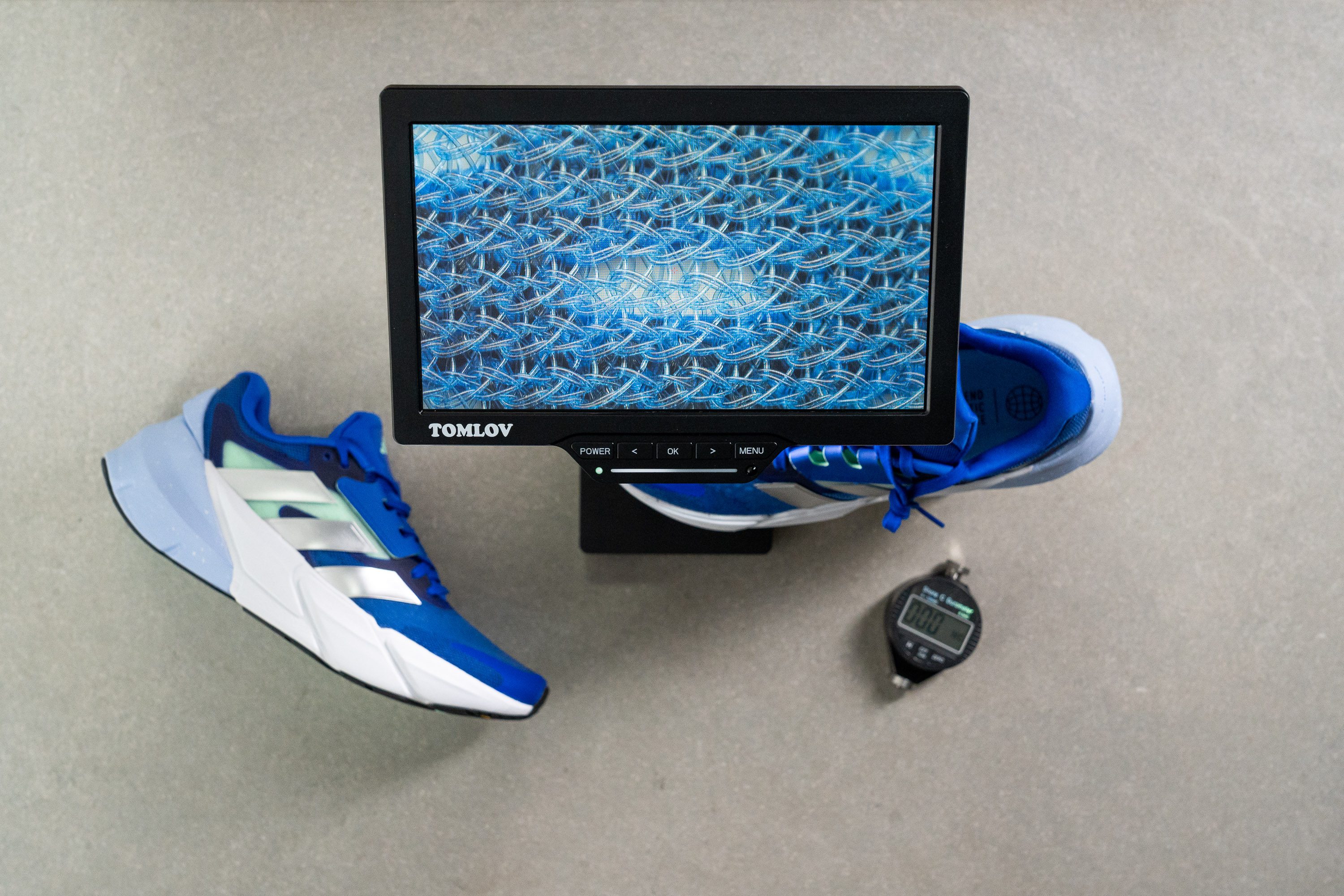
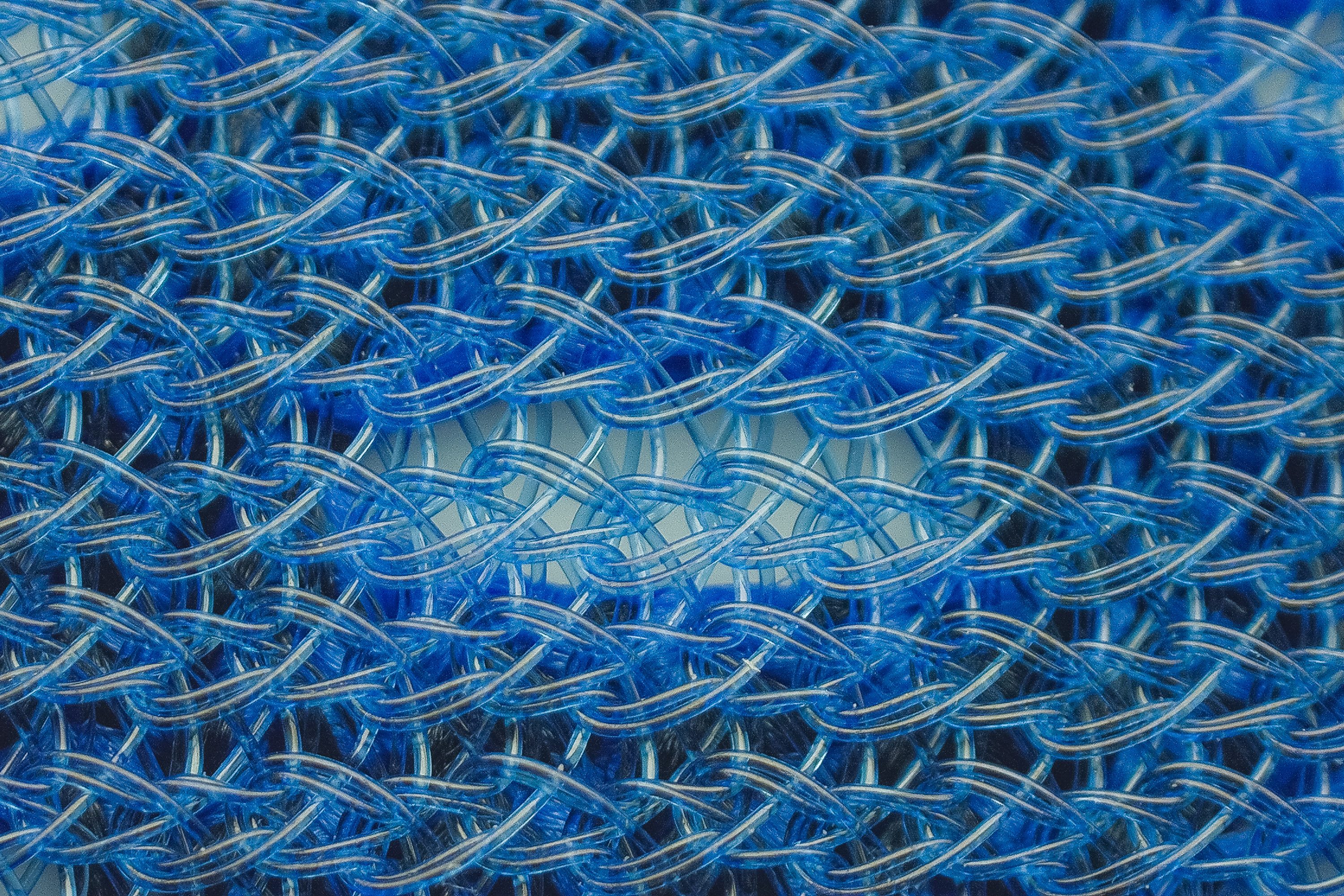
| Adistar 2.0 | 5 |
| Average | 3.7 |
This section is a work in progress
Stability
Lateral stability test
The Adidas Adistar 2.0 is a mighty stable shoe. As you can see from our ankle movement test, it is nearly impossible to roll the foot over this sturdy sole.
We are not even sure why the brand came up with the shoe's stability version called the Adidas Adistar CS (CS stands for Cushioned Support).
Torsional rigidity
We were barely able to twist this Adistar! On a stiffness scale from 1 to 5, we rated it as 4.
You mostly find this kind of torsional stiffness in stability shoes with medial posts and shanks.
| Adistar 2.0 | 4 |
| Average | 3.5 |
Heel counter stiffness
The heel counter is a beast too. In our manual assessment, we rated its stiffness as 4 out of 5.
Such a rigid heel counter held our ankles firmly in place and the extension of firm foam at the back definitely helped with support.
| Adistar 2.0 | 4 |
| Average | 2.9 |
Midsole width - forefoot
The landing surface of the Adistar 2.0 is BIG! That is one major contributor to the shoe's stability.
We measured the widest part of its forefoot at 118.1 mm. At the time of testing, this was wider than 92% of our lab-tested running shoes.
What's more, even among stability shoes, only Hoka Gaviota 4 can beat this Adidas shoe in its width (115 mm in the forefoot and 103 mm in the heel).
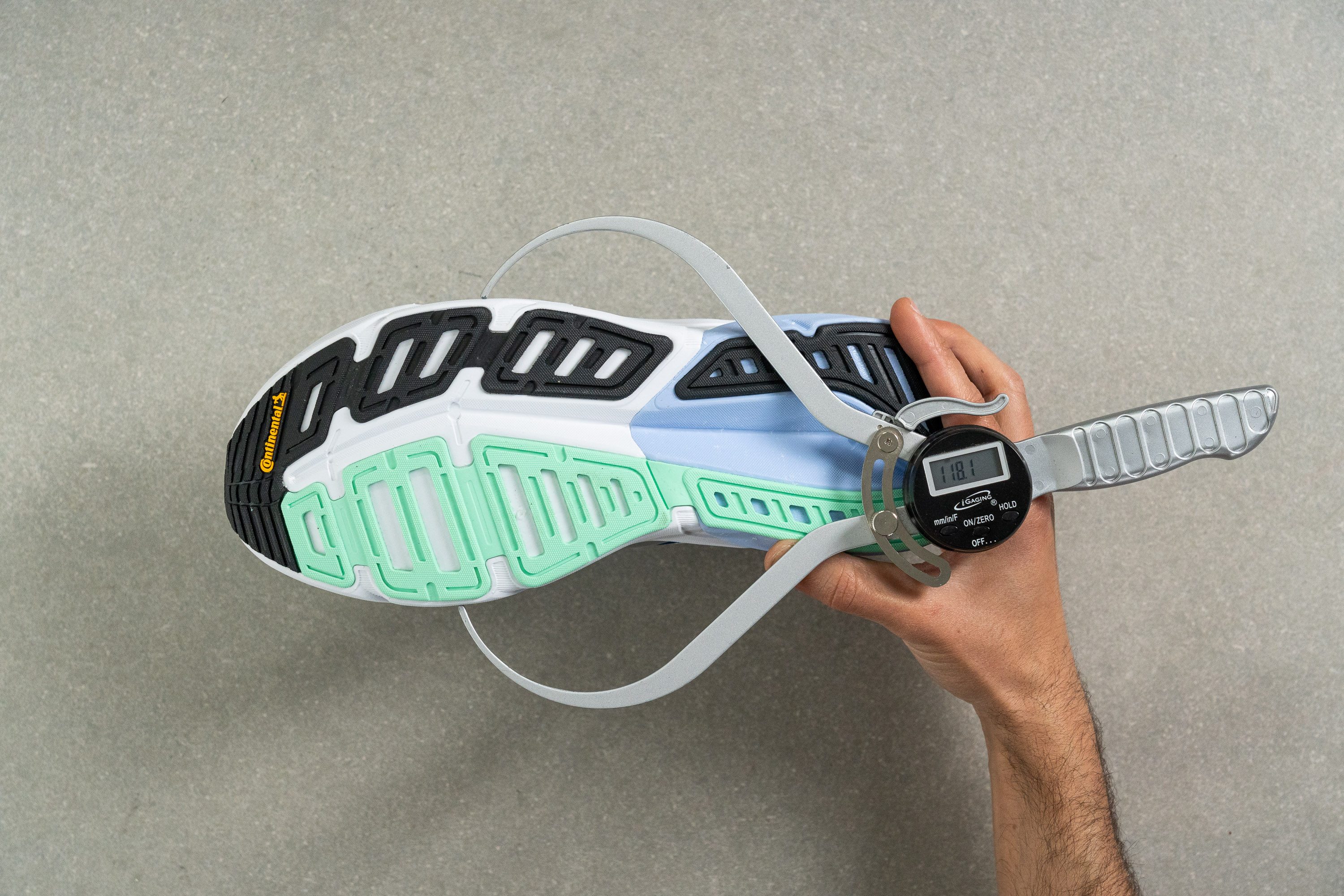
| Adistar 2.0 | 118.1 mm |
| Average | 114.4 mm |
Midsole width - heel
The Adistar 2.0 keeps beating records in the heel width as well. At 96.1 mm in its widest part, the platform is significantly wider than average.
We can see a great benefit here for runners with moderate overpronation who don't want to get a stability shoe.
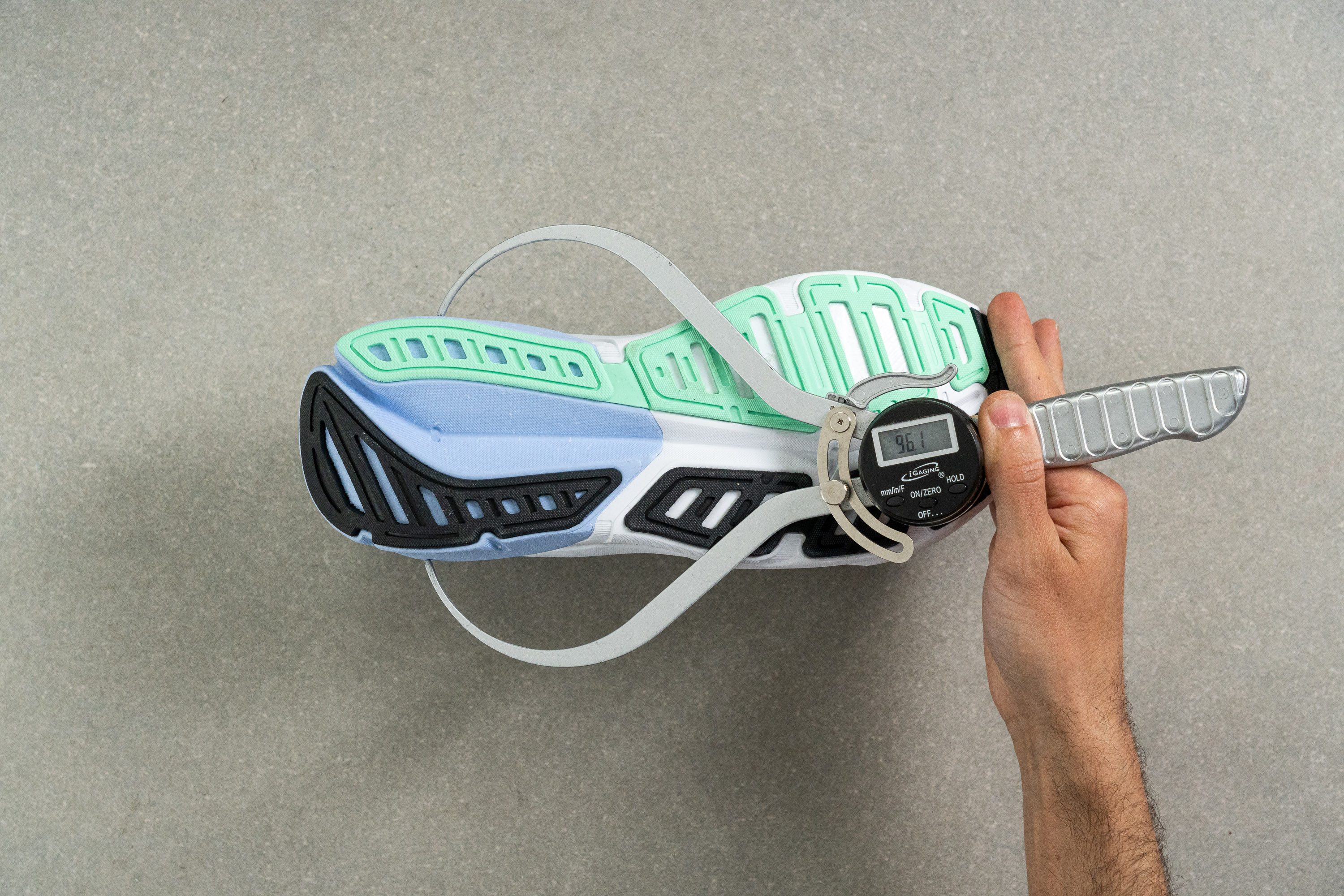
| Adistar 2.0 | 96.1 mm |
| Average | 90.7 mm |
Durability
Outsole hardness
The shoe's Continental rubber is also not among the hardest we've seen, it is just average.
Based on these two measurements, we expect a regular 400-500 mile shelf life from the Adidas Adistar 2.0.
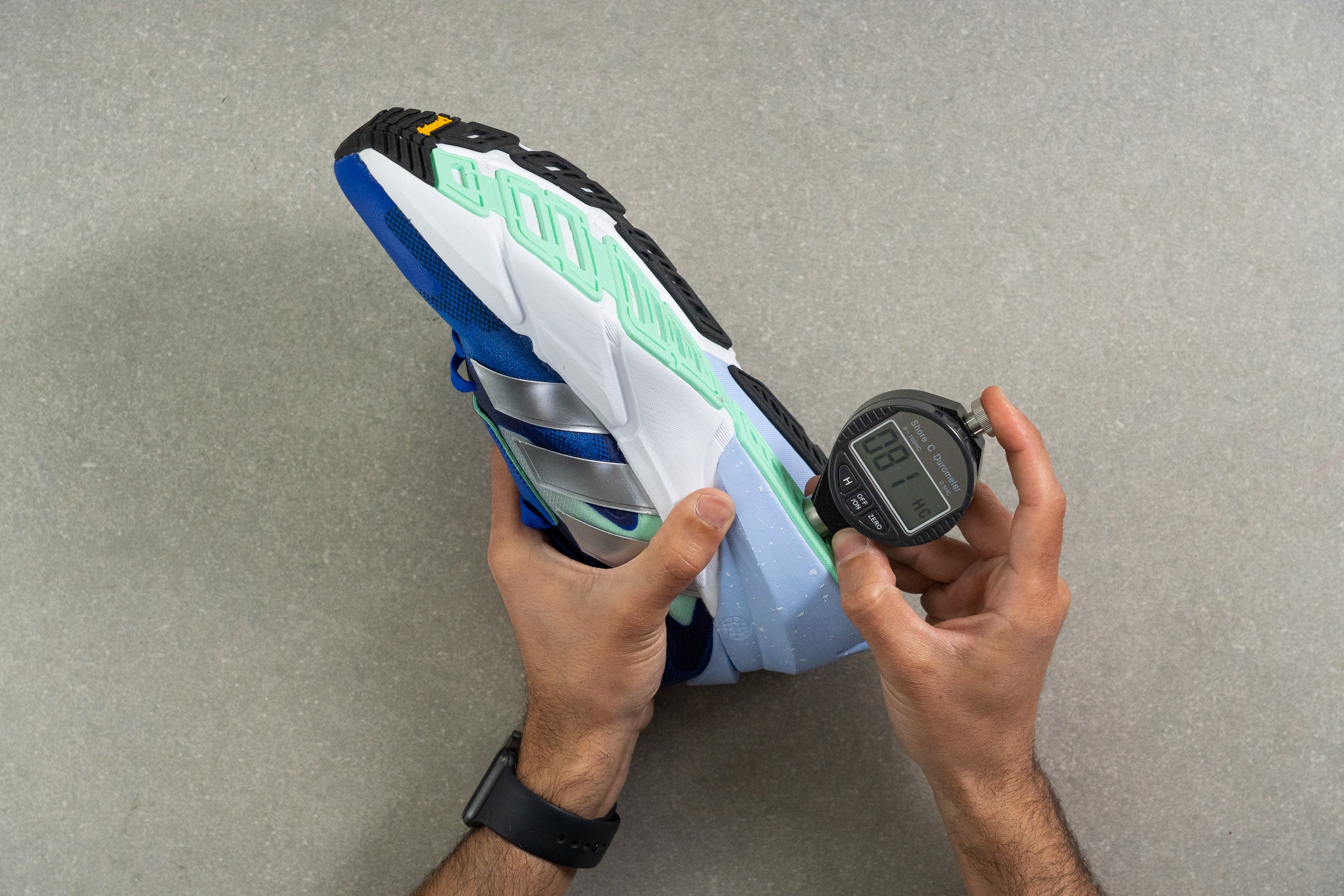
| Adistar 2.0 | 80.9 HC |
| Average | 79.2 HC |
Outsole thickness
Using our caliper, we measured the thickness of the outsole rubber. At 3.4 mm, we found it moderately thick, sitting just at the average.
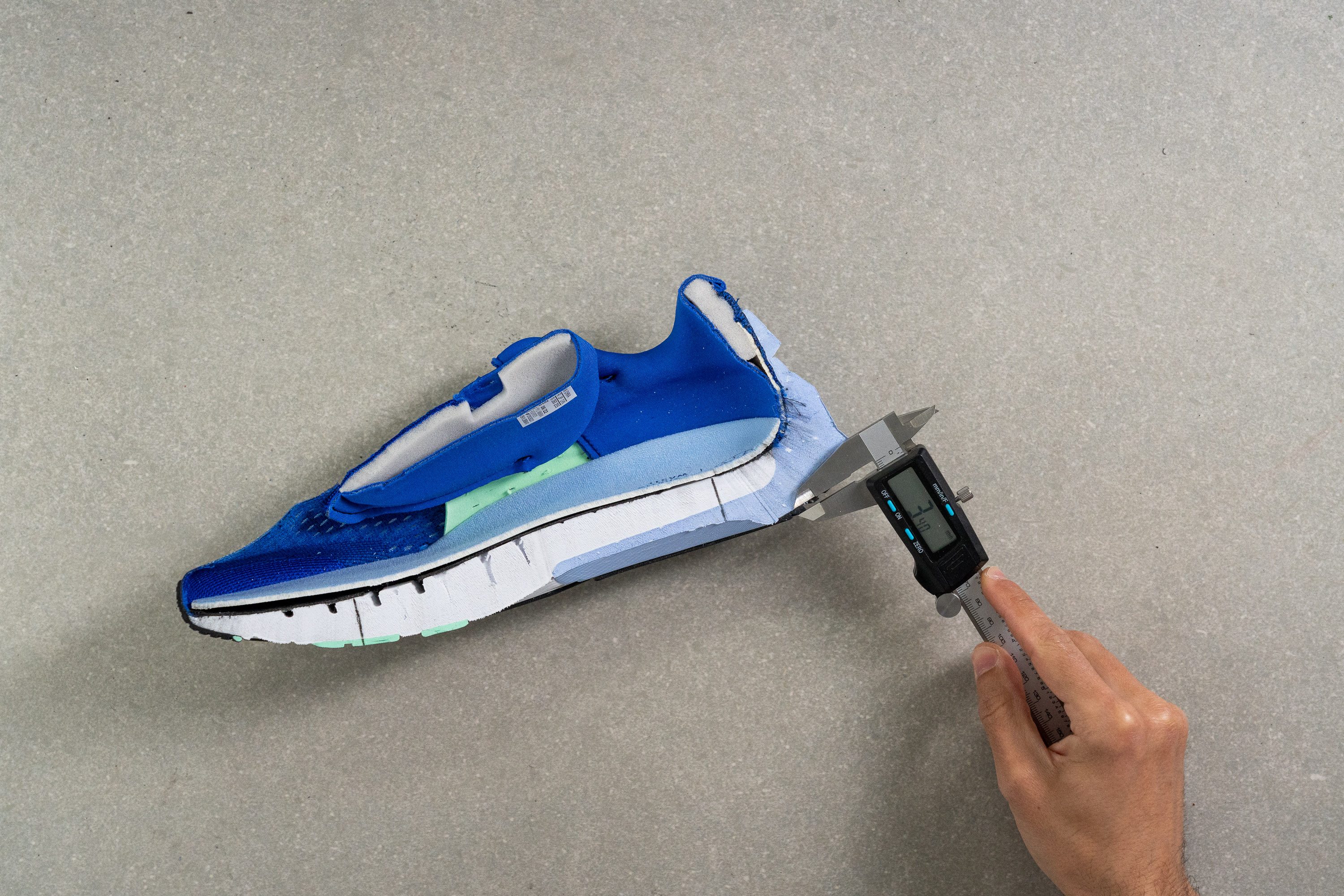
| Adistar 2.0 | 3.4 mm |
| Average | 3.2 mm |
Misc
Insole thickness
The insole doesn't add much to the shoe's stack height - only 3.1 mm.
A little thinner than the average but it proved to be just enough to keep us comfortable.

| Adistar 2.0 | 3.1 mm |
| Average | 4.5 mm |
Removable insole
And if you choose to add even more padding or arch support, the shoe's insole is easily removable.
| Adistar 2.0 | Yes |
Midsole softness in cold (%)
We also checked how the shoe's primary foam behaves in cold temperatures. Turns out that it does get firmer but not as much as many other foams do.
After 20 minutes in the freezer, the durometer shows 28.3 HA. This is a little softer than the average.
So if you happen to leave your pair of Adistars outside overnight, it won't turn into a brick for your morning run.
We found that the Adistar 2.0 got 26.3% firmer after 20 minutes in the freezer. This is about the same difference in firmness as we see in many other road running shoes.
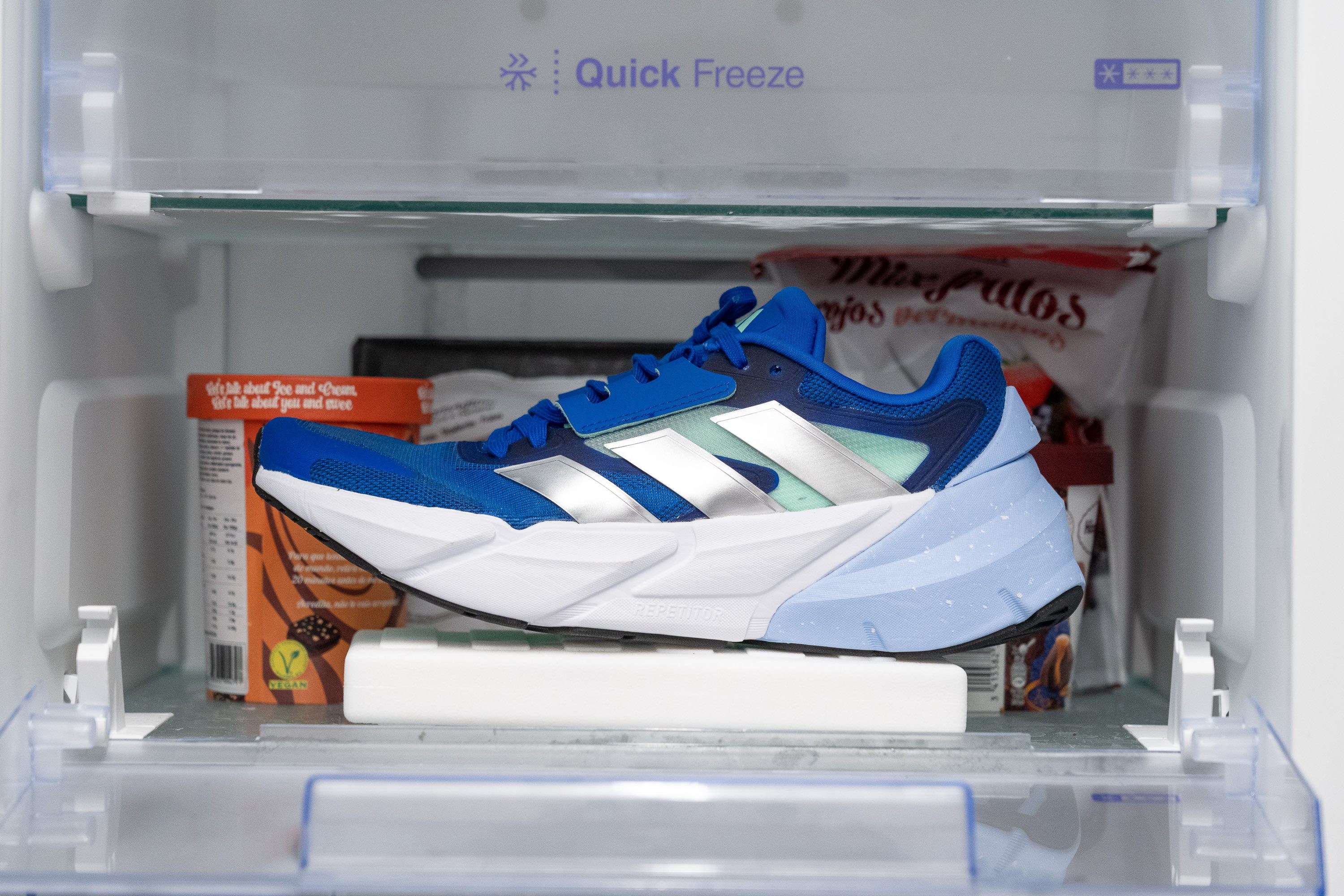
| Adistar 2.0 | 26% |
| Average | 24% |
Reflective elements
None of the shoe's components is reflective.
| Adistar 2.0 | No |
Tongue padding
The tongue padding is so thick in this Adidas shoe that it might be too much for some runners.
We measured it at 8.7 mm which is noticeably thicker than the average. You can also see nearly as much padding in the heel collar. The shoe is really abundant with padding.
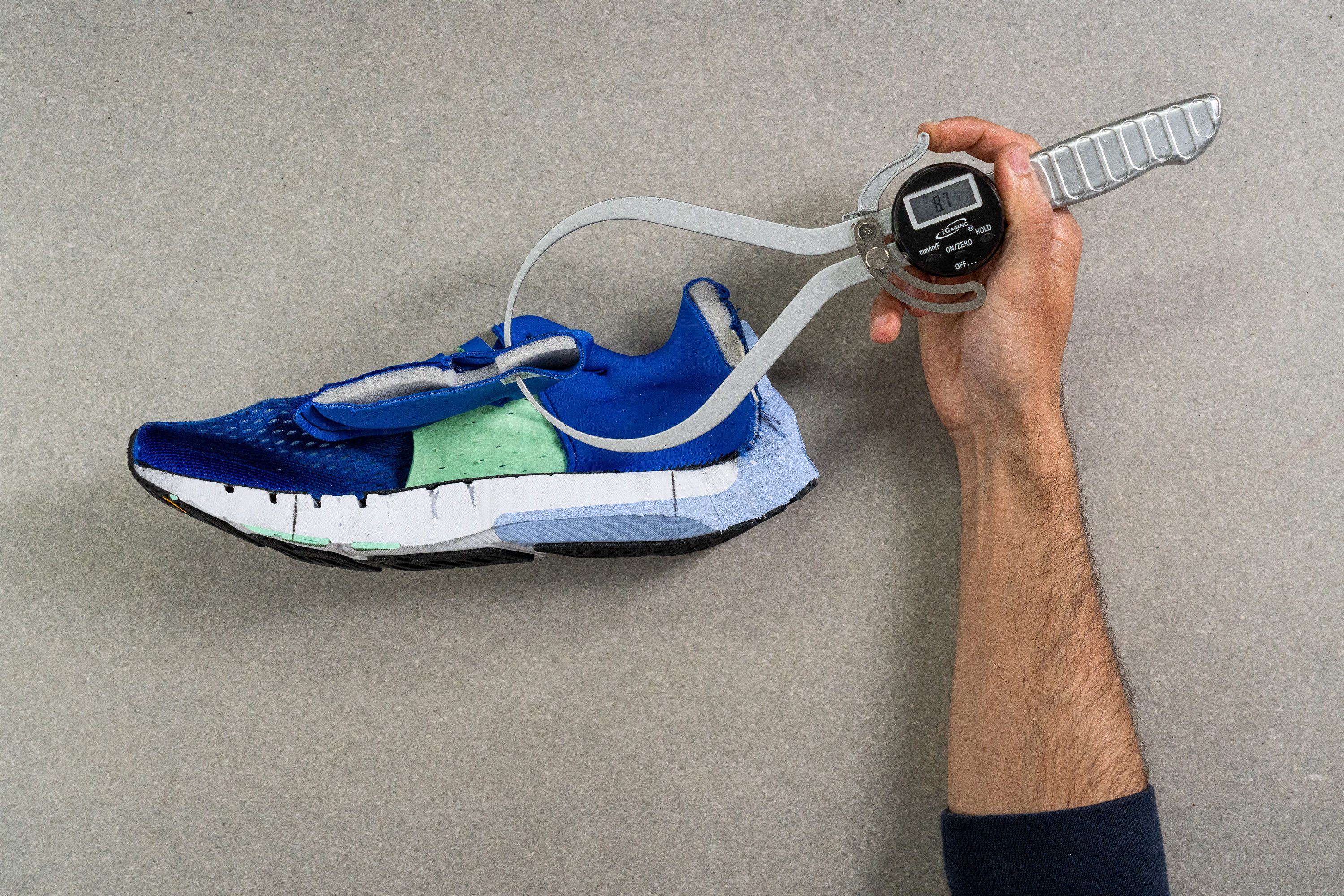
| Adistar 2.0 | 8.7 mm |
| Average | 5.8 mm |
Tongue: gusset type
The tongue is not gusseted in the Adistar 2.0.
But maybe that's even for the better because the gussets could've made the fit even tighter in the midfoot.

| Adistar 2.0 | None |
Heel tab
There is no heel tab on this Adidas shoe, but the non-gusseted opening makes for a very easy entry.
| Adistar 2.0 | None |

